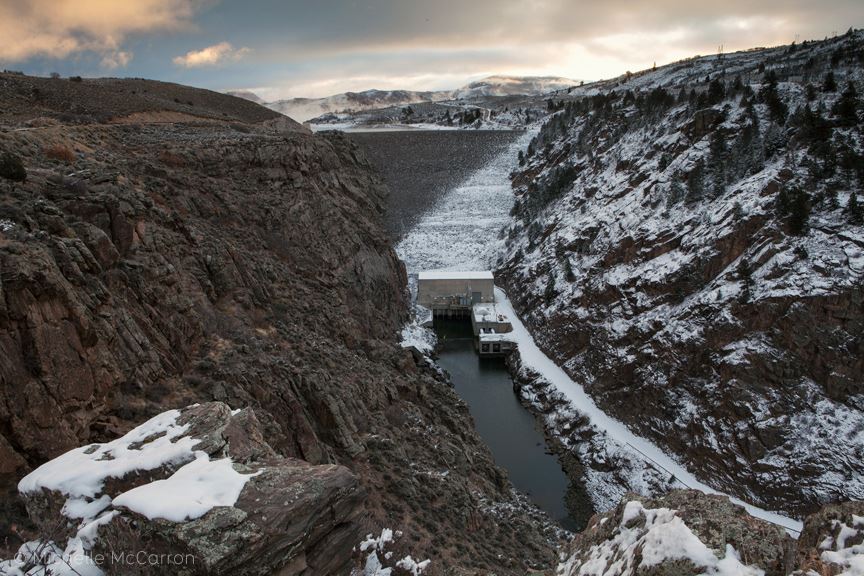Featured image by Michelle McCarron
Editor’s note: This is the latest installment from Will Falk as he follows the Colorado River from headwaters to delta, before heading to court to argue for the Colorado River to be recognized as having inherent rights. More details on the lawsuit are here. The index of dispatches is here.
by Will Falk / Deep Green Resistance Southwest Coalition
Water is life. But, water is also death. Water brings pleasant taste to the parched tongue, but water also brings stinging numbness to the warm blooded. Water taken through the esophagus brings hydration. Water taken through the lungs brings suffocation. Water may be disrespected for a time, but the longer the passage of water is hampered, the angrier water becomes. Water has a long memory and, where others forget, water carries pollutants and poisons for decades.
When I think about what it would mean to fully recognize the rights of the Colorado River to exist, flourish, regenerate, and naturally evolve, I know the river will demand a reckoning. I know this lyrically and I know this ecologically. Lyrically, the river is full of a righteous rage. Ecologically, too many humans have come to depend on the exploitation of the river and the rest of the natural world. The balance that must be achieved will come with profound pain. Humans will die, their lifestyles will be dramatically changed, and those who require the gifts of civilization will see those gifts taken.
The black waters of the dammed Blue and Colorado Rivers stroked the Dillon Reservoir walls with their dark thoughts and taught me these lessons. It was several hours after sunset and well below freezing. A certain morbidity rose from the artificial lake and crystallized to hang on the air. Somewhere out of sight, but perilously near, I could feel the stirrings of anger. I sensed the anger was slow to swell, but irresistible when fully aroused. I was mesmerized by the stars spilling over ripples and by the crescent moon’s silver threads, two nights from new, dancing across the water. In the town of Dillon below, harsh electric lights sparked and crackled with a troubled tension.
The images came unbidden. The first faint crevice appeared in the earth-filled wall. Water hissed as it pushed through. Rivulets appeared as tears rolling down the dam’s face. Then, a series of sharp cracks rang out like the reports of heavy ordnance announcing the beginning of battle. Earth and stone blasted away to fall into the valley. Water rushed into Dillon. Poles holding power lines snapped like toothpicks. Chunks of asphalt were ripped up. Automobiles flipped and tumbled like pebbles on a creek bed. Factory outlet stores, gas stations, and multi-story hotels were washed away.
The white torrents that cascaded from the broken dam were flecked with joy. The waters retook the Blue River’s original path. The waters from the Colorado, knowing they would never rejoin their mother, were gladly adopted by the Blue. It was all over in a matter of minutes. This sudden demonstration of natural power passed and a quiet peace settled where Dillon once stood. The peace wasn’t without pain. Human bodies floated facedown among the wreckage. The water regretted the deaths, but knew the human bodies would be broken down and used to heal the wounds humans had created.
As the vividness of the images faded, I was left with the echo of a warning. I recalled all the dams in the Colorado River Basin, all dams everywhere, and I prayed that a peace could be made with the dammed waters of the world.


